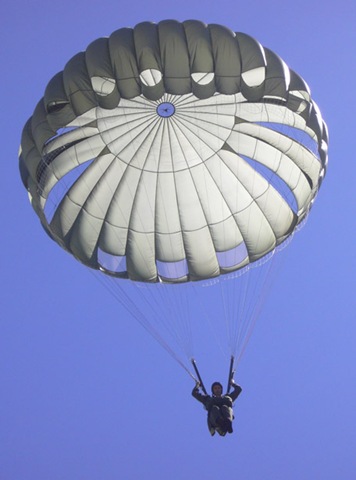This is a great book, and is just one of many that Mr. Plaster has written over the years about SOG. What is cool is that I continue to get something new out of these books, every time I flip through them. Lots of battlefield innovation going on there and they should definitely be on your reading list.
The one area that I wanted to talk about with these books, was the North Vietnamese tracker teams that were tasked with hunting down these SOG teams. On page 54-55 of this book, Mr. Plaster goes into detail about what it was like to be hunted by these NVA tracking teams, and it was fascinating.
One of the deals I picked up on was the use of CS powder to throw off the dogs the Vietnamese would use. Although, according to the SOG troopers, it was skilled trackers who were more feared than dog teams. The reason for that is because a human can read the land and knows to keep their mouth shut.(the dogs were noisy, and only as good as the handlers) The NVA tracking teams would also drive teams purposely into traps.
The one story that Plaster talked about was being followed by a tracker team that wanted to be heard. Plaster’s SOG team figured out that the trackers were purposely trying to spook the recon team into paths, or channeling them into NVA blocking forces/ambushes. What made these trackers so effective, was how well they knew their little piece of land they were assigned along the Ho Chi Minh trail and their ability to read spoor. As a result, many SOG teams feared these trackers and had to plan accordingly. Many SOG teams were also killed and a few captured due to the efforts of these trackers. Having a knowledge of combat tracking in that environment, was just one key to the success of SOG troopers operating in such a hostile environment.
My other favorite part was Project Eldest Son. This was basically booby trapping ammunition, and planting that ammo on dead NVA soldiers that the teams would kill. This ammo was designed to destroy the AK when it was fired, as well as hurting or killing the soldier firing it. These types of operations would put doubt into the quality of ammunition the NVA troops were getting from the Chinese, and then hopefully hinder the relationship between China and Vietnam at the time. That was the idea at least.
One other story that I liked was about Bob Howard’s team and their use of Nightingales. These were distraction devices designed to make the enemy think they are being fired upon, when in fact they were just firecrackers going off. Pretty slick. But how the team used it, and the end result, was fantastic. The SOG team decided to slip one of these devices right into the center of a camp of NVA. When it went off, the NVA woke up and thought that an enemy attack was happening right in their camp. And because the SOG teams were known to dress up like the NVA and use their same weapons (pseudo operations), the NVA instantly thought that a SOG team was attacking. The funny thing was, is that there was no SOG team attacking and the chaos was being fueled by panicked NVA and the Nightingale. The outcome is what was really crazy. The NVA was actually shooting at each other and killing one another. It is the kind of results that would make the Joker from Batman giggle. In the end, the NVA camp was littered with dead and the SOG troopers were able to escape unharmed.
Anyways, check it out and let me know what you think. These books have been around for awhile, and they are great reads while out on deployment. On a side note, the video game called Call of Duty: Blackops has a story line based on the MACV SOG missions.(Mr. Plaster advised on that game) –Matt
——————————————————————–
Secret Commandos: Behind Enemy Lines with the Elite Warriors of SOG
John L. Plaster
SOG was the Studies and Observations Group, a U.S. Army organization that operated behind enemy lines in the Vietnam War. It gathered intelligence and was responsible for rescuing downed pilots, identifying bombing targets, kidnapping enemy officers, wiretapping phone lines, ambushing convoys, and mining the Ho Chi Minh trail. Plaster shares details of his training in Fort Bragg as a Green Beret before being sent to Vietnam, where he served three one-year tours in SOG. He chronicles the group’s operations and portrays the soldiers he worked with there. Some readers may find too much here about fighting a war that many people today believe should have never happened, but the book nonetheless is an intriguing first-person account of this elite group’s intrepid operations.
Product Description

